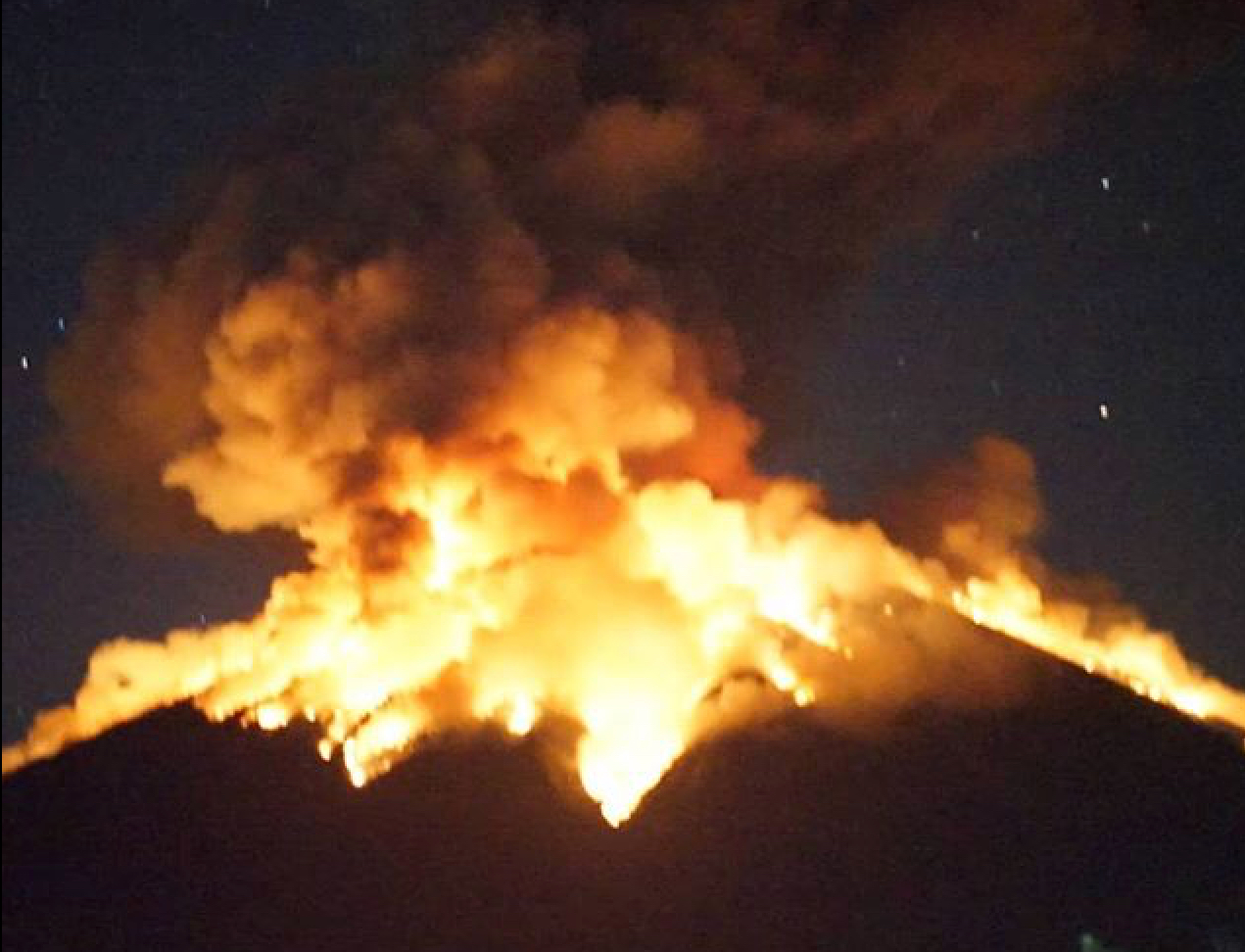In a fiery scene resembling the flames of Mordor, Bali’s Mount Agung erupted on Monday evening, sending up bursts of lava and ash two kilometers into the sky.
The blast is understood to be a Strombolian eruption, tweeted MAGMA Indonesia, the country’s official source on volcano, earthquake, and tsunami disasters.
Earning their name from the Italian volcano, Stromboli eruptions are a type of “mild” blast.
Erupsi terjadi secara Strombolian dengan suara dentuman. Lontaran lava pijar teramati keluar kawah mencapai jarak 2 km.
— MAGMA Indonesia (@id_magma) July 2, 2018
Indonesia’s volcanology center (PVMBG) recorded the eruption, starting at 9:04pm, as having a duration of seven minutes and 21 seconds.
Mount Agung persists as a level III “standby,” the second highest alert level.
Untuk sobat energi yang berada di daerah Bali dan sekitarnya, pukul 21.04 WITA tadi telah terjadi erupsi G.Agung. Teramati kolom abu kurang lebih 2.000 m diatas puncak #KabarGeologi @vulkanologi_mbg @kabargeologi @id_magma pic.twitter.com/08zfmyn3nW
— Kementerian ESDM RI (@KementerianESDM) July 2, 2018
PVMBG has declared a four-kilometer exclusion zone from the volcano’s crater, urging villagers living in close proximity to evacuate.
Mount Agung is located in Bali’s eastern Karangasem regency, about 75 kilometers northeast from the tourist hub of Kuta.
The exclusion zone is not fixed and could change at any time, given the volcano’s conditions, says the volcanology center.
Villagers living on the slopes of the volcano are advised to be prepared for potential cold lava flows, powerful and destructive debris-collecting flows, containing ash that are more likely to occur when there’s heavy rainfall.
“The volume of magma in Mount Agung is increasing,” PVMBG director Kasbani stated on Monday, as quoted by Tribun Bali.
Magma and lava has been observed at the surface of the crater since the beginning of June 2018. The magma is at a depth of about three to five kilometers from the volcano’s peak, according to Kasbani.
Satellite images are still recording the existence of hot spots in the crater of Mount Agung, associated with flowing lava activity.
Prior to this evening’s booming eruption, Mount Agung erupted three successive times this morning.
After erupting on June 29, a slight deflation was noticed was noticed at the volcano.
“Despite the deflation, the volcanic system has not fully relaxed. Deflation measurements still indicate the existence of magma pressure building in the depths of Mount Agung,” Kasbani explained.
Agung’s volcanic activity is still developing and remains unstable, says Kasbani.
Authorities are closely monitoring ash content–Bali’s airport was shut down for nearly 12 hours last week because of ash in the air.
Volcanic ash can pose a threat to flights, depending on which way the winds carry the ash. Ash can be dangerous for planes, making the runaway slippery and can get sucked into aircraft’s engines.
As for more immediate risks, the potential for lava to flow far outside the craver is still low though because the lava currently fills less than half the volume of the crater, according to the PVMBG director.
There is also potential for a scenario where the lava could come out of the crater in a pyroclastic flow (hot cloud) but the possibility of a such a threat isn’t high, because the building up of pressure inside the body of Mount Agung has not been recorded as significant enough for this, Kasbani says
After several months of near silence, the volcano spat up smoke on Thursday afternoon, triggering evacuations in the immediate area and a nearly 12-hour airport shutdown on Friday.
Before stirring back to life last year, Mount Agung last erupted in 1963, killing around 1,600 people.





Reader Interactions